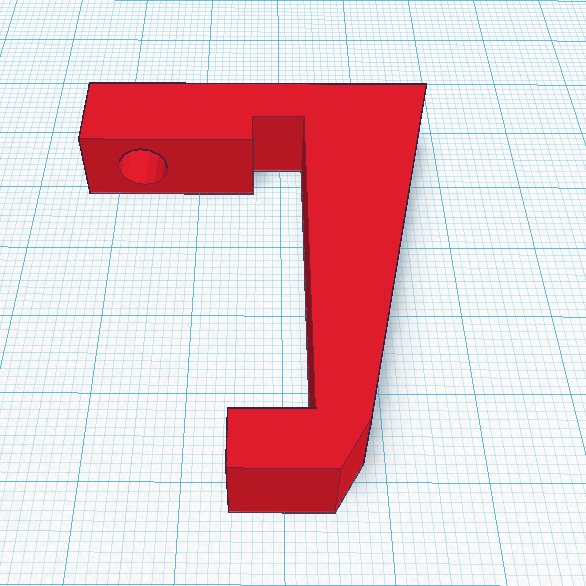handling "twisted" filament
Hi there,
I ordered a sort of 500g-filament rolls, which can be printed very good.
But there is one side-effect which causes problem.
After some meters of ABS, the material is leaping out of the roll, twists and causes a knot.
So the rest of the model is ruined, because the filemand couldn't flow.
I heard of this problem already. But how to handle?
Greetings, Daniel
Re: handling "twisted" filament
Use some filament guide. Find one on thingiverse or design your own.
Re: handling "twisted" filament
The filament guide needs to be way closer to the spool. Try to turn it upside down.
Or maybe this: http://www.thingiverse.com/thing:1688923
Re: handling "twisted" filament
I see. I'll try.
Thanks for you advice.
Re: handling "twisted" filament
I created this one. http://www.thingiverse.com/thing:1757702 . It seems to work. I'll give it a try.
Re: handling "twisted" filament
Hi,
the issue with this design is that the filament might get stuck with the extruder at top position.
You really should watch my design (the link above by David ^^)
(I'm not very active right now, with a lot of travel for work ...)
I'm like Jon Snow, I know nothing.
Re: handling "twisted" filament
You are right. This will become a problem with taller objects.
I'll try your guide.
Re: handling "twisted" filament
The problem is not the guide but the roll holder. There is not enough drag on the roll, same as on a fishing reel when you get overrun, and end up with a birds nest. We modified both of our MK2 with a simple holder that applies just a little friction to roll to keep tension on the line.
Re: handling "twisted" filament
The problem is not the guide but the roll holder.
With my other printer, the spool holder has an 8mm rod. I create customized spool hubs for each different type of filament spool. I imagine I'll try something similar with my MK2 (under construction).
http://www.thingiverse.com/thing:1642543
John
Re: handling "twisted" filament
One thing that I should mention that I noticed about using a filament guide I designed myself is that if you intend to go the full 200mm up on the Z axis and then have the X axis travel from 0mm to 250mm, will it hit the guide? I think that christophe.p's spool holder has an adjustable guide so that this doesn't happen.
and an 8 inch (200mm) or greater caliper is recommended.
Re: handling "twisted" filament
There are many causes of the problem.
I printed many kinds of filament with the my MK2.
Most of them run well. But the last sort was 500g-spool and the filament has tension in it self. And so the trouble began.
If the printer doesn't drag all the time (and this is normal, even the printhead comes back from the outer region of the bed to the middle, the filament is that nervous (?, don't know the word, turbulent/bumpy) and flips out of the roll.
I searched and found many ways to fix that problem. Some people ...
- use guides
- use special rolls with higher borders
- unwind the whole roll and rewind it on another roll
- heat up the filament to get out the tension inside the material.
I think the easiest way is to use a guide. This should fix most of the problems.
But the best way would be, to use a new roll-holder. Just as described by jay.b, but with a little pullback. Using springs or something. Or balancing weight. But I don't have a good idea how to do that.
Perhaps a pullback, combined with a slipper (used in RC-Scale models). So the filament would kept tight, but not to tight.
What do you think?
Re: handling "twisted" filament
Hi Daniel,
the issue you describe is exactly what I encountered and is the main reason why I designed the filament guide that way. So that:
when filament tension decrease, or even is rolling back, the extra filament remain around the spool.
when the extruder is going on side positions with maximum Z values, the filament is not hardly bent and then stuck in the guide. That means the guide must be high enough, and the hole large enough to let the filament make a round curve.
And initially I used the spool hub adaptors linked by JohnOCII, but that adds some manipulation when unloading and then loading a spool. It's really more convenient to use a generic large holder than two small adaptors with a threaded pole to be inserted.
I'm like Jon Snow, I know nothing.

